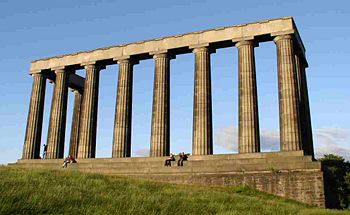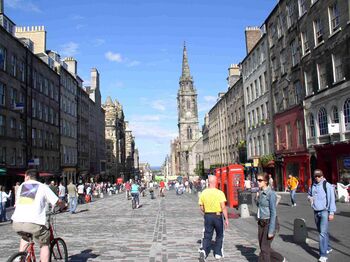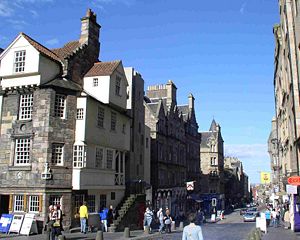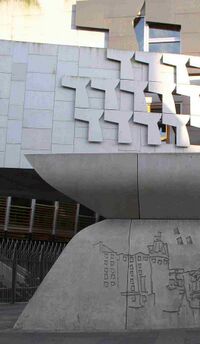Edinburgh
Edinburgh is the capital city of Scotland. In 2001, Edinburgh had a population of 448,624, and has since grown quite rapidly. Edinburgh is also home to the devolved Scottish Parliament.
Edinburgh hosts the Edinburgh International Festival every July, as well as the Fringe festival, the largest festival of performing arts in the world. It has some of the most famous tourist sites in Britain, including Edinburgh Castle, and attracts about 13 million tourists each year. Edinburgh's "Old Town" and "New Town" districts were listed as a UNESCO World Heritage Site in 1995. Edinburgh also hosts the Edinburgh Military Tattoo, the Edinburgh International Film Festival, as well as jazz and book festivals. Other notable events celebrated in Edinburgh include the Hogmanay street party (31 December), Burns Night (25 January), St. Andrew's Day (November 30), and the Beltane Fire Festival (30 April).
The Royal Mile
The Royal Mile is the main street in Edinburgh's Old Town, and runs from Edinburgh Castle to the Royal Palace of Holyrood, a distance of just over a mile. The New Scottish Parliament building is at the foot of the Royal Mile, opposite the Palace. St Giles Cathedral, the High Kirk of Edinburgh, is in Parliament Square on the Royal Mile; its four main pillars are dated to 1190. Just outside the kirk, inset into the pavement is a cobblestone mosaic in the shape of a heart - the "Heart of Midlothian", that marked the entrance to Edinburgh's 15th century tollbooth. Originally an office for collecting tolls, the tollboth became a prison, with a scaffold outside. Traditionally, prisoners would spit on the door of the tollboth and this tradition is still preserved as the custom of spitting on the Heart of Midlothian.
Arthur's Seat
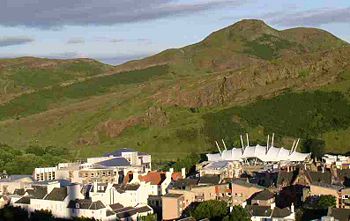
Arthur's Seat, the hill in the centre of Edinburgh that overlooks the new Scottish Parliament (bottom left) and "Dynamic Earth" (bottom right)
In the centre of Edinburgh, enclosed within Holyrood Park (adjacent to the Royal Palace of Holyrood) is Arthur's Seat, the basalt lava plug of a long extinct volcano, last active around 335 million years ago, during the Carboniferous period. The hill rises to a height of 251 m (823 feet), and overlooks Edinburgh's Old Town to the West.
Two stony banks on the east side of Arthur's Seat are the remains of an Iron Age hill-fort. In 1836, seventeen tiny wooden coffins each containing a carved figure were found in a small cave just below the summit. It has been suggested that they may have associations with witchcraft or that they were intended as memorials to the victims of William Burke (1792-1829) and William Hare (1904-ca 1860), who sold bodies for dissection to the anatomist Professor Robert Knox of the Edinburgh Medical College, and turned to murder to satisfy the demand[1]. Burke and Hare murdered at least 16 people and perhaps as many as 30. Burke was hanged on 28th January 1928 (Hare escaped execution by givinig evidence against Burke), and his body was donated to the medical school to be dissected. A pocket-book made from his skin is on display in Surgeon's Hall Museum of the Royal College of Surgeons of Edinburgh[2], and his skeleton is at the Anatomy Resource Centre of the University of Edinburgh[3].
The Scottish Parliament
The Old Town
The New Town
Museums
Hotels
- The George
- The Balmoral Hotel, at the east end of Princes Street
- The Caledonian Hotel, at the west end of Princs Street
